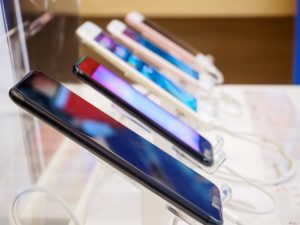Enterprise Managed Mobility and New Tech- New iPhones Expected in September
Here we go again. Apple is due to release a new iPhone this fall, the iPhone 14 series with new features and capabilities. Although no official dates have been released yet, we can guess the timing of this new model launch will likely follow the same pattern as years past, an early to mid-September time- frame. What does this mean for your Enterprise Managed Mobility Program? A lot, let us explain.
Some Employees Want the Latest Tech
We all know the early adopters, those that have to get their hands on the newest gadget, gear and technology. The same is true within organizations, the users who are requesting the newest phone model as soon as it comes out can produce a wave of interest and discussion. Then there is the opposite of the spectrum, the users who do not want to give up their older iPhone because they have everything exactly where it needs to be.
Obviously, for a company with thousands of devices, a large device refresh project may not be on the forefront of an IT departments list of initiatives due to a company’s overall device refresh strategy and considerations for where the enterprise’s devices are in their overall lifecycle. Do you refresh every year, 2 years, 3 years, or just when the devices break and need to be replaced?
Regardless of an organization’s strategy, a large device refresh project can be a massive undertaking in your Enterprise Managed Mobility Program, one that requires careful planning and execution.

Operating System Updates and Security
I think we are all aware by now, using an older iPhone or Android can put your company at serious risk for a hack attacks. Vulnerabilities exist when newer operating systems are available but not used on a device. You neglected to take the time to update to the newest OS and now cyber criminals know of that vulnerability and can capitalize on it.
Hackers use tactics like sending SMS messages with links, they use virus-ridden apps available on the AppStore and Play Store and even try to connect to your device if they are in close proximity via Bluetooth. Even just browsing websites with an older device can create an issue without you even knowing, and all of these examples can put your company’s and your personal data at risk.
Not only does Apple release a new iPhone model each year, they also release a new Operating System roughly every twelve months (iOS 15 released back in September of 2021). Similarly, Android released Android 12 in October of 2021. For Apple, iOS 16 coming this fall is due to have some significant feature enhancements like having the ability to edit a text message that was just sent or even better, the ability to undo a recent text message you just sent! Imagine the users that find out about this capability and clamor for new iPhone 14 devices just because of this feature.
So back to our question about when should a company refresh their devices? With all the sophisticated hacking attempts and schemes in today’s world, a device lifespan is no longer about how long a device actually functions technically, it is about how long the device will be protected and supported.
Balancing Act and Project Planning
Another change that accompanies the release of a new iPhone model are the discounts that reduce the cost of previous iPhone models. These can range from 12% to 20+ % depending on the model. In addition to manufacturer discounts, wireless carriers may offer additional incentives to upgrade older devices to a newer model. These significant discounts should factor into your strategy on when to upgrade your older devices.
Best practice dictates that long gone are the days when employees determine when to upgrade their device. A comprehensive mobility program aligns the features of new phones with the economics of both new and old phones to arrive at a balanced approach to support your business with devices while maintaining strong financial management.
Having an accurate inventory complete with make, model and upgrade eligibility allow you to implement sound decision making on proactive upgrades.
Lastly, having project resources to contact employees and manage the upgrade process is key for success. Proactively managing the process while having knowledgeable wireless resources available will help mitigate issues and frustrations before they bring unwanted consequences. Staging and kitting new devices with clear instruction for employees to activate their new device will make for an exceptional experience representative of a mature enterprise.
Add Value Back to Your Business
Providing further benefit will be the residual value of the devices due for upgrade. An iPhone 11 in very good condition can still be worth hundreds of dollars in the aftermarket. Having a robust reclamation program in place will help lower the overall costs of your mobility program while ensuring that all sensitive data is wiped clean. Allowing your employees to keep an older device opens you to risk of corporate sensitive data being compromised and adds costs to your mobile program.
A recent enterprise took advantage of a $0.01 iPhone 12 wireless carrier sponsored upgrade for 1,000 devices. OVATION was able to reclaim 74% of the 1,000 older devices, of which, 82% had residual value totaling over $150,000. The remaining 18% or 133 devices were locked or damaged with no value, but were disposed of correctly minimizing the impact on the environment.
OVATION Support for Device Refresh Programs
Since 2002, OVATION has been supporting enterprises with our Managed Mobility Services driving savings and mature business practices in how mobile devices and associated costs are managed. Contact us today to see how we can help bring a disciplined approach to your Enterprise Mobility Program.



